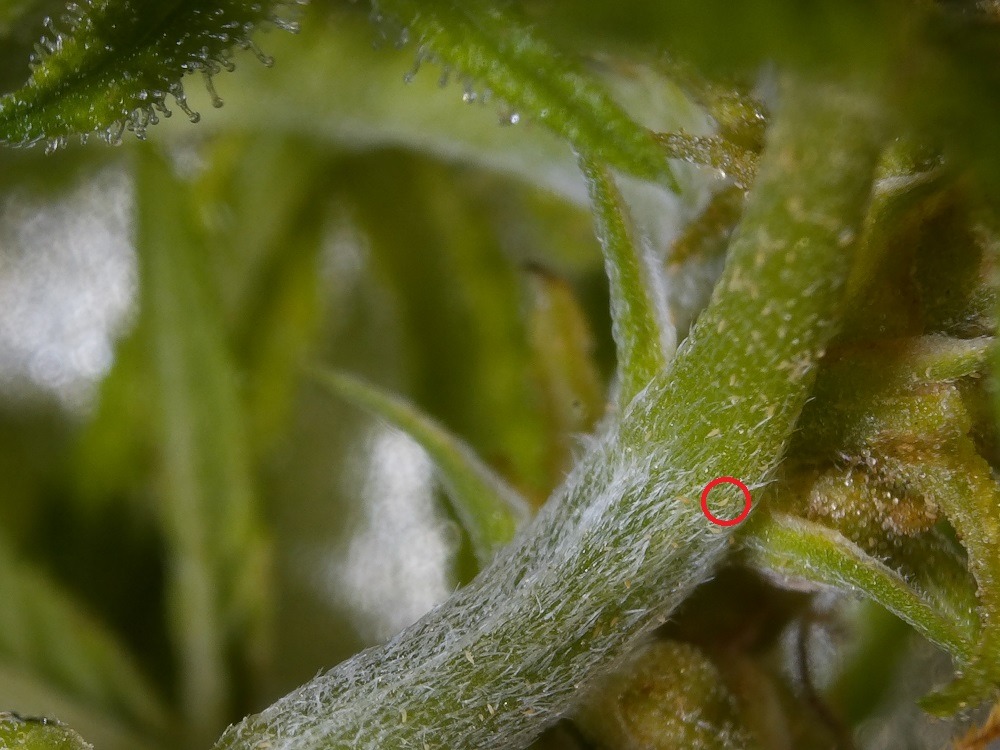
Washington Bud Company uses essential oil sprays and a variety of “good bugs,” such as Amblyseius andersoni, pictured above, to control “bad bugs” such as russet mites.
The necessity of proper pest and mold management protocols and the discovery of pesticide-laden products on store shelves has reached a fever pitch in Washington, the only state that does not require pesticide or heavy metal testing for cannabis products.
Tests from independent labs and the Department of Agriculture have shown an unacceptably high percentage of products — more than 30% — have shown residues of either illegal pesticides or over-concentrations of approved pesticides.
As co-owner of the first cannabis flower company in the state to voluntarily test for pesticides and heavy metals, we recognize that bugs, molds and mildews are part of our natural world, so our philosophy is not that we must rid our grow of them but manage them so the plants thrive despite their possible presence. We believe that no matter how sealed a grower makes the environment, the critters will get past it. And since we can’t beat them, we recognize them as a part of the process.
Our ever-evolving methods over the past seven years have successfully dealt with thrips, fungus gnats, aphids, russet mites, twospotted spider mites, botrytis and powdery mildew; you name it, we’ve had it and managed them with safe and approved methods.
This is what works for us at Washington Bud Company:
– The strains: Growing naturally resistant cannabis is a huge leg up to a clean grow. For example, we do not grow Querkle anymore, even though it was a high yielder with a wonderful cannabinoid profile, because it apparently loved botrytis. Screening cultivars takes lots of time, patience and focused observation to cull out the susceptible strains, but it’s worth it in the long run.
– The set-up: Originally, we considered growing in a warehouse, greenhouses or outdoors but saw limitations to them all. When it comes to indoor pest and mold management, your mechanical systems must meet the needs your space. We chose to build our grow buildings from the ground up, so we could plan the drainage, ceiling heights, insulation, HVAC, storage areas, security and work flow. We also set up our grow rooms so we can clean them regularly and thoroughly.
– Good bugs and essential oil sprays: The real trick is to combine the use of organic sprays with the various beneficial bugs so we are not killing the good bugs that eat the bad bugs. We rely upon nematodes and Stratiolaelaps scimitus in the soil during vegetative stage, plus mist the young plants with Lacewing B.E., a rosemary and yucca-based product that does not clog the transpiration process of the plants. Our plants go into flower healthy, with minimal pest pressure using, this organic spray combined with the soil bearing beneficial bugs.
In the flower rooms we add thousands of Dalotia coriaria, a rove beetle that roams the soil and eats as many as 150 larvae a day; these little buggers are ferocious. Amblyseius andersoni are then strategically placed into the canopy. They are the grim reapers of mites; spider, twospotted, russet and broad mites are all on the menu. A fascinating aspect is these beneficials turn cannibal and eat themselves if they do not find plant-eating bugs. Amblyseius cucumeris are also brought in during springtime when thrips are breeding.
Once we understood that there is a good bug for every bad bug, we knew we could figure it out with the help of our suppliers (including Dominion Organics, Arbico Organics and Sound Horticulture).
– The routine: Constant observation of the garden and routine checks of soil and plant matter under a 100x microscope are essential for maintaining low pest pressure. It’s also critical to see the difference between the good and bad bugs. A good microscope is key!
In addition to constant observation, thorough cleanliness is a vital routine. We have visited grows that have plants in several stages of growth in one room, leaving no time when the room is empty for a complete cleaning. In our grow, everything gets cleaned monthly: fans, filters, lights, corners, drains, walls, floors, trays, buckets, etc. We use Simple Green, hydrogen peroxide, hot water and lots of elbow grease. Then we spray a light coating of diluted bleach on the floors and walls to sanitize the rooms before we introduce new plants.
– The sacrifice: We have had to destroy plants. It is hard to do when each plant represents potential revenue. But when pest pressure overwhelms a garden, the plants must be removed and destroyed and you have to start over. Sacrificing the short-term harvest for the long-term health of the grow is a sad reality for those that refuse to use the chemicals that work for crops that are not grown organically. Sorry to break the news.
– The commitment: You have to want to figure it out. I wish it was as easy as 1-2-3, but each grow is unique so the desire to produce clean cannabis has to lead the effort. It is a shame that so many legal growers began with little to none of that commitment that now the government feels the need to step in and force the issue with mandatory testing.
Bring it on; grow clean or go home!




